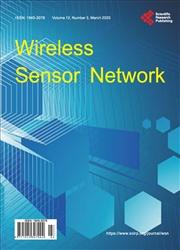Energy Efficient Packet-Duration-Value Based MAC Protocol for Wireless Sensor Networks
引用次数: 10
Abstract
Medium Access Control (MAC) protocol consists of sets of rules that determine which node is allowed to access the transmission medium. It provides mechanism for collision avoidance such that interfering sensor nodes do not transmit at the same time. In the literature, researchers have proposed different MAC protocols with features aimed at improving energy efficiency and thereby prolonging the life of sensor nodes. Sensor MAC, Time-out MAC (T-MAC), Dynamic Sensor MAC (DSMAC), WiseMAC, Quorum-based MAC (Queen-MAC) and Traffic Adaptive Medium Access Protocol (TRAMA) are some examples of proposed MAC protocols. There is a duration field in each transmitted packet. The value of this field indicates how long it will take to complete the remaining packet transmission. In the current paper, a novel energy-efficient MAC protocol is proposed based on the use of duration value in transmitted packets to setup varying sleep/wake-up schedules for neighbouring nodes of the receiver. The effectiveness of this proposed Packet-Duration-Value-based MAC (PDV-MAC) protocol is tested via Simulation which is implemented in Visual C# and MATLAB. It is shown by the results obtained that the proposed MAC protocol can indeed be implemented in sensor nodes to improve energy efficiency in wireless sensor network.基于数据包持续时间值的无线传感器网络高效MAC协议
介质访问控制(MAC)协议由几组规则组成,这些规则决定允许哪个节点访问传输介质。它提供了避免碰撞的机制,使得干扰传感器节点不会同时传输。在文献中,研究人员提出了不同的MAC协议,其特征旨在提高能源效率,从而延长传感器节点的寿命。传感器MAC、超时MAC (T-MAC)、动态传感器MAC (DSMAC)、WiseMAC、基于群体的MAC (Queen-MAC)和流量自适应媒体访问协议(TRAMA)是一些被提议的MAC协议的例子。在每个传输的数据包中都有一个持续时间字段。该字段的值表示完成剩余数据包传输所需的时间。本文提出了一种新的节能MAC协议,该协议利用传输数据包中的持续时间值为接收方的邻近节点设置不同的睡眠/唤醒计划。采用visualc#和MATLAB进行仿真,验证了该协议的有效性。结果表明,所提出的MAC协议确实可以在传感器节点上实现,从而提高无线传感器网络的能源效率。
本文章由计算机程序翻译,如有差异,请以英文原文为准。
求助全文
约1分钟内获得全文
求助全文

 求助内容:
求助内容: 应助结果提醒方式:
应助结果提醒方式:


